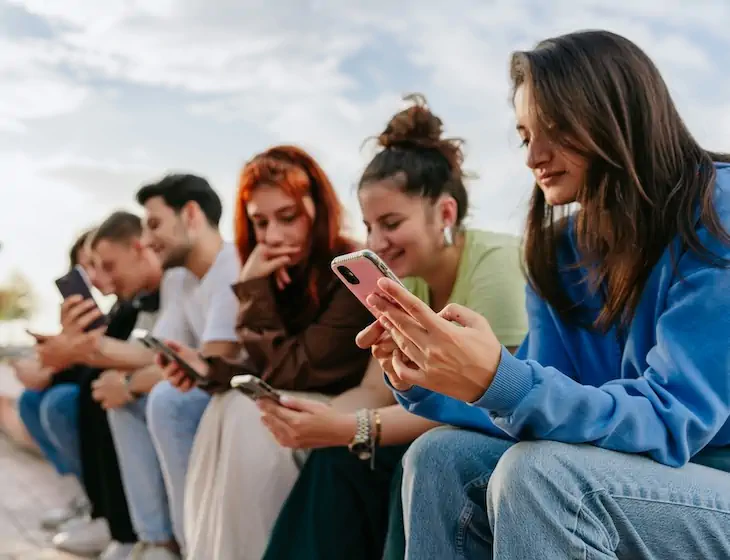In addition to screen time impacting teen mental health and sleep, a recent study found that teens who watch more TV also consume more sugar and caffeine. The 2019 study found that teens who spend an additional hour watching TV daily, exceed the recommended sugar and caffeine intake by roughly 30%. Additionally, every hour of phone or social media use resulted in a higher caffeine and sugar consumption (Bradbury, 2019). These rates are alarming considering teens spend an average of 7 hours per day using screens (Media Use by Teens and Tweens, 2019).
Screen time habits can have a domino effect on health. The increased intake of caffeine and sugar can also impact sleep, which can impact attention span, moods, and nutritional intake, which all can play a role in weight gain and obesity, risk of elevated cholesterol, as well as risk of other chronic diseases. Research also shows there is a strong relationship between social media use and depressive symptoms (Lisaak, G., 2019).
The American Academy of Pediatrics recommends placing limits on screen time in order to prioritize sleep and physical activity. Screen time during meal time or right before bedtime, can be especially detrimental to health as using the screen during those times can impact sleep and food and sugary drink consumption, respectively. The AAP recommends having screen-free times like an hour before bedtime to promote sleep as well as during meal times.
While screen time, phone usage, and social media are a normal part of teen life, having boundaries around screen time can ensure that screen time is enhancing your child’s life and not causing health issues by negatively impacting nutrition and mental health.
Tips for family screen time use:
- Creating a plan for media use as a family can be beneficial in setting boundaries and expectations for screen time. The AAP has a tool called the Family Media Use Plan, where you can create a tailored plan for your family’s unique needs. The Family Media Use Plan can be accessed here: HealthyChildren.org/MediaUsePlan.
- Set expectations. When kids and teens know ahead of time if there are areas or times of day that are “off limits” for screens (like at dinner or before bed, for example), and the consequences are predetermined and decided upon together, it can be easier to implement the family plan/rules.
- Having activities on the schedule naturally makes less time for screens. Involvement in activities like sports, dance, clubs, teams, theater, music, or tutoring can naturally limit time available for using screens.
If you need assistance helping your kids improve their health or well being, contact the W.E.L.L. Clinic at Children’s Primary Care Medical Group. The W.E.L.L. Clinic specializes in helping kids, teens, and families make habit changes to improve health in the following areas: nutrition, physical activity, sleep, stress management, and screen time. To make a W.E.L.L. Clinic appointment in La Costa call 760-633-3640, and for Oceanside call: 760-547-1010.
Sources:
Bradbury, K. M., Turel, O., & Morrison, K. M. (2019). Electronic device use and beverage related sugar and caffeine intake in US adolescents. Plos One, 14(10). doi: 10.1371/journal.pone.0223912
Media Use in School-Aged Children and Adolescents. (2016). Pediatrics, 138(5). doi: 10.1542/peds.2016-2592
Lissak G., Adverse physiological and psychological effects of screen time on children and adolescents: Literature review and case study. Environ Res. 2018 Jul;164:149-157. doi: 10.1016/j.envres.2018.01.015. Epub 2018 Feb 27.


